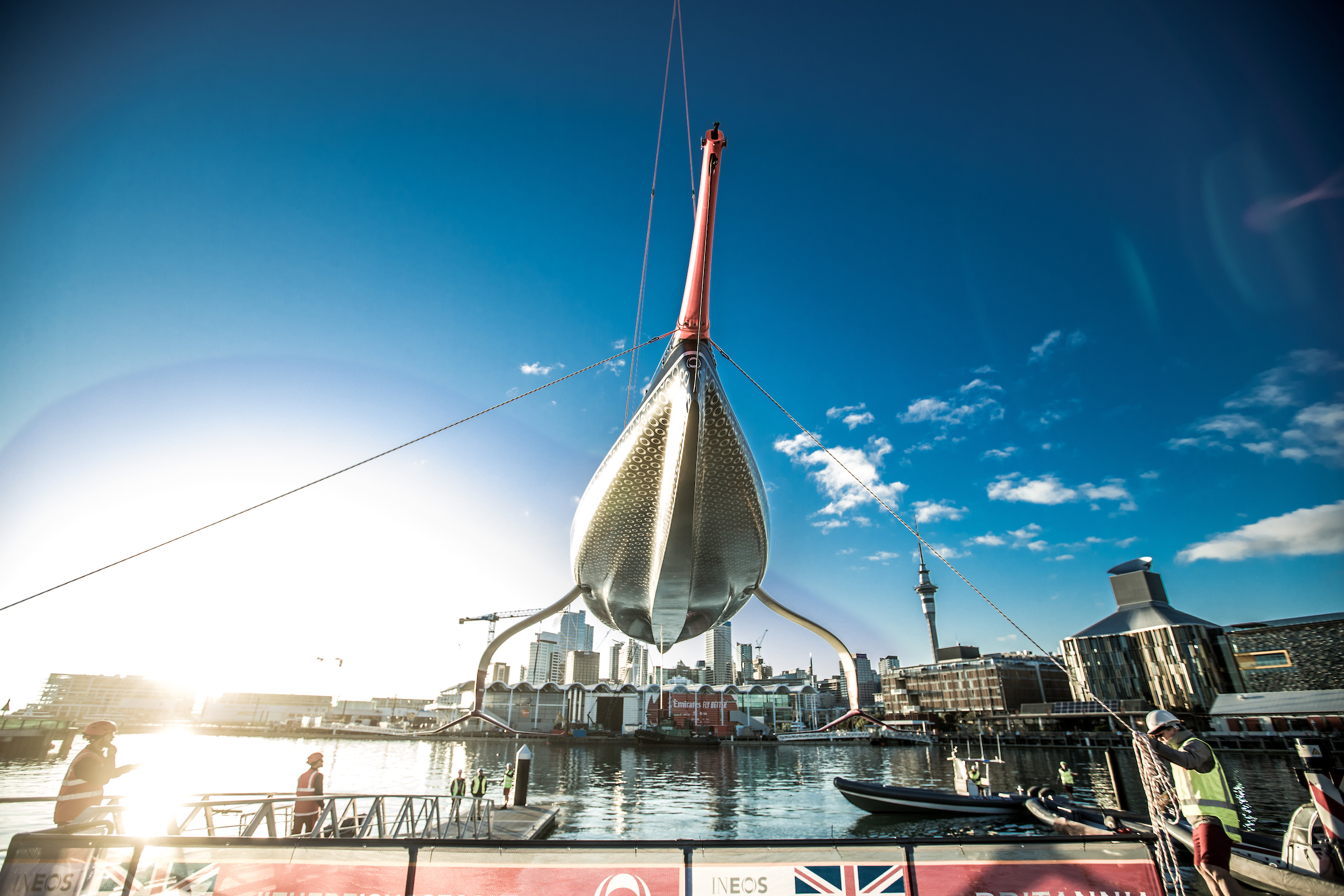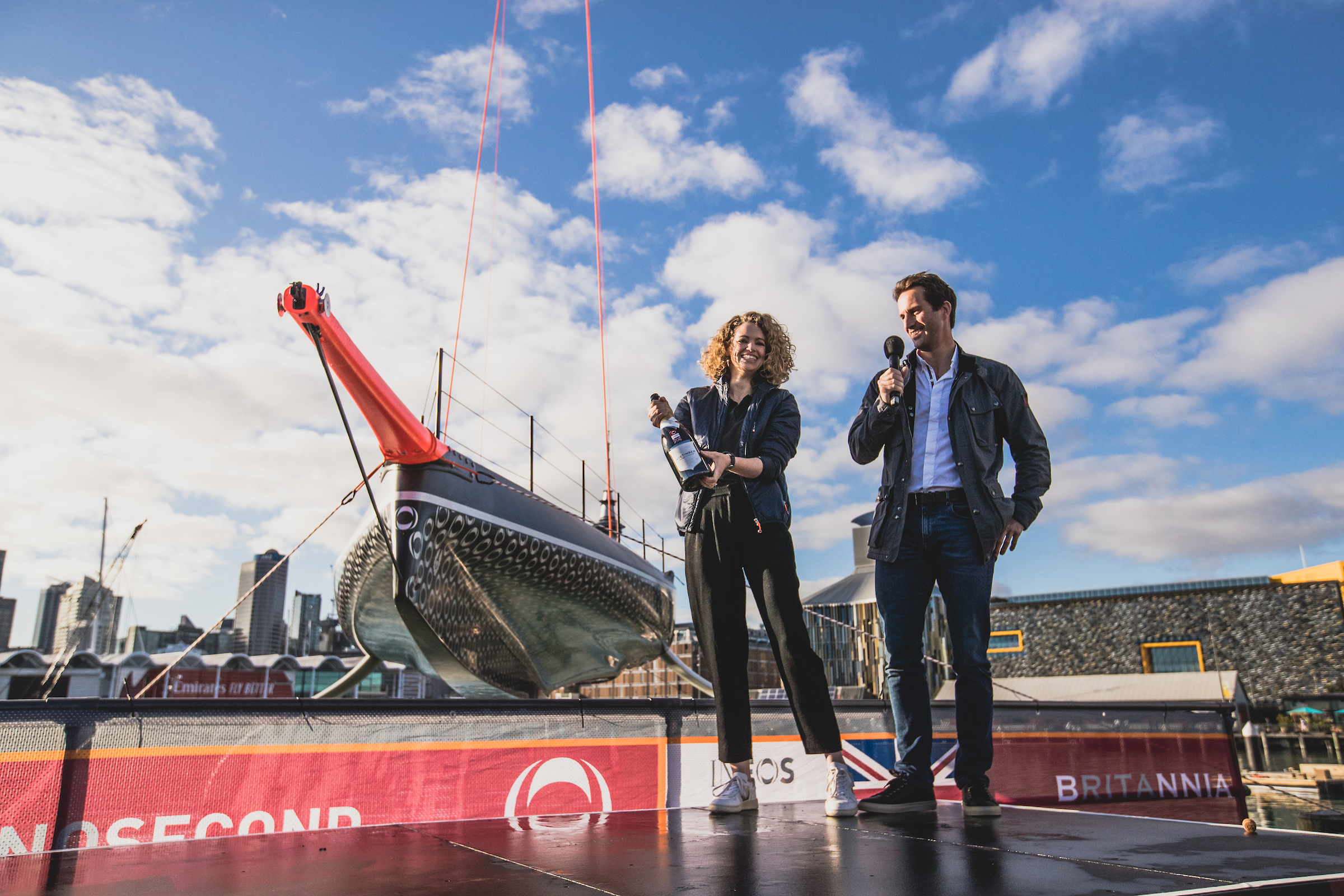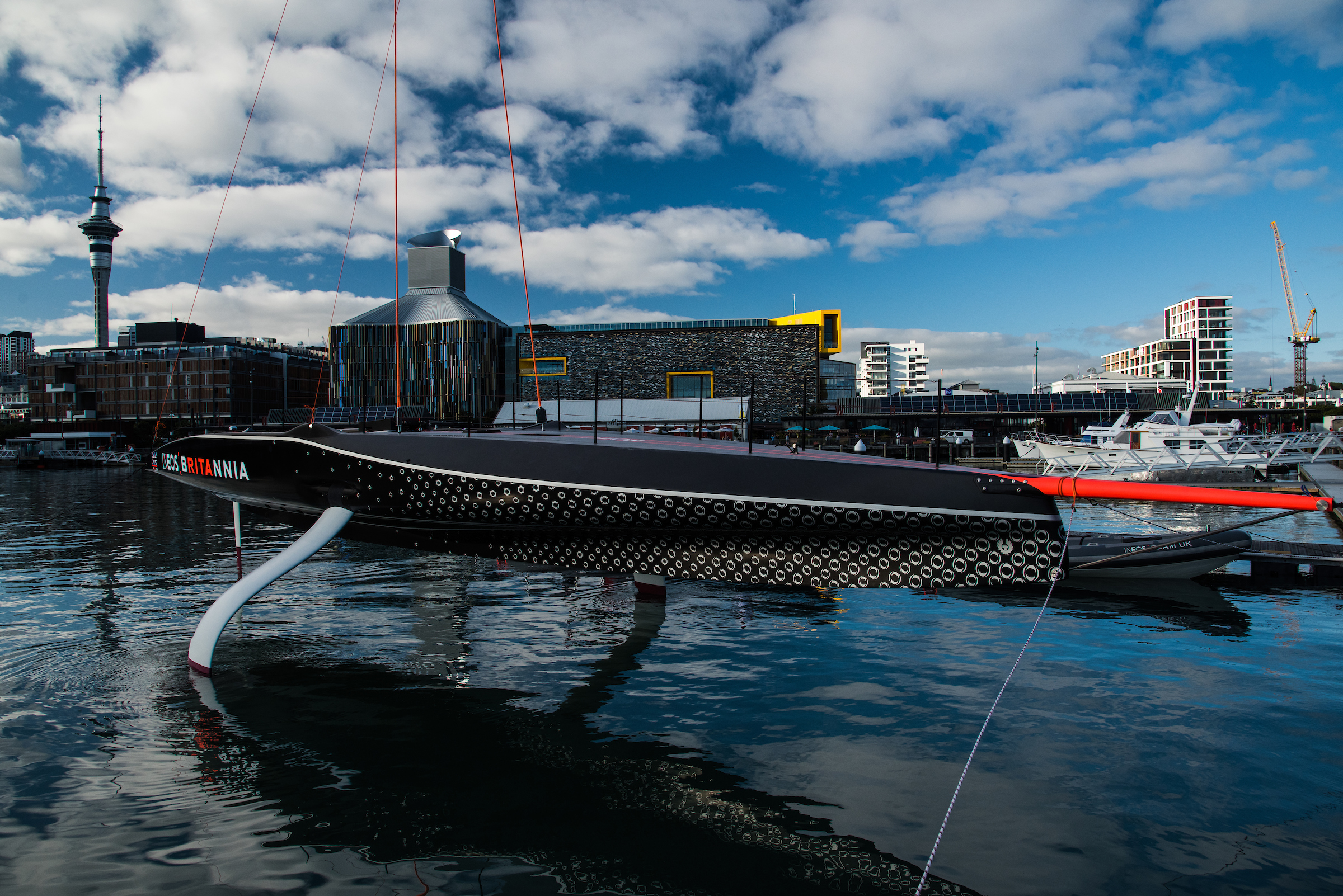The British Challenger for the 36th America’s Cup name their race boat ‘Britannia’ in Auckland
Britannia to be helmed by four-time Olympic gold medallist and America’s Cup winner Sir Ben Ainslie with fellow Olympic Gold medallist Giles Scott as Tactician
Boat launch culmination of 46,000 construction hours and >90,000 design hours
The team will be competing for the world’s oldest international sporting trophy
INEOS TEAM UK has officially christened their America’s Cup race boat ‘Britannia’ from the team’s base in Auckland, New Zealand, three months before the start of racing for the 36thAmerica’s Cup.
Britannia, the team’s second AC75, pays homage one of Britain’s most famous racing yachts as INEOS TEAM UK seek to become the first British team ever to win the America’s Cup, the world’s oldest international sporting trophy.
From the historic challenges of Sir Thomas Lipton through to Sir T.O.M. Sopwith and more, the ‘Auld Mug’ has evaded British hands for 170 years ever since the yacht America won the first edition of the regatta in 1851 and took the famed trophy off of British shores.
The America’s Cup is the world’s oldest international sporting trophy, predating the modern Olympic Games by 45 years and being older than both the FA Cup and the Ryder Cup. The first America’s Cup even took place 35 years before the car and 52 years before the inaugural flight of the Wright Brothers.
Team Principal and Skipper Sir Ben Ainslie and his assembled team will bid to change the course of history and become the first team ever to bring the Cup back home.



